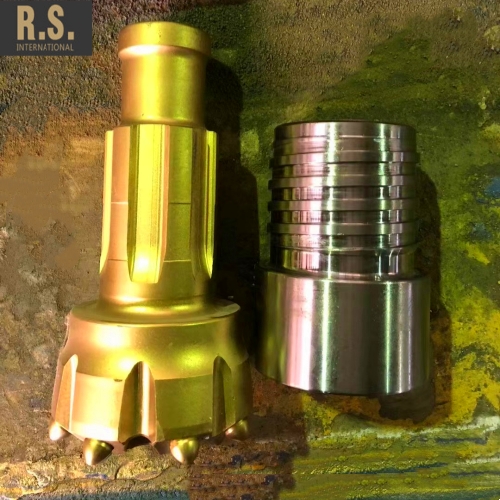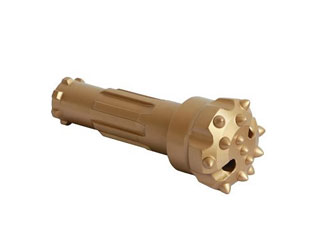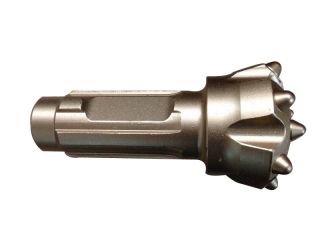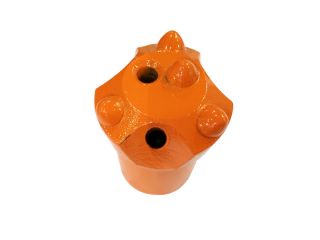Excellence in Action: Maintaining and Optimizing DTH Drill Bits
- Date:2023-10-22
- Share with:

**1. Erosion Issues:**
The bottom button grooves of DTH drill bits typically experience wear and tear, especially when drilling through abrasive layers. In high abrasive conditions, DTH drill bits may wear faster than alloy teeth, a phenomenon known as "DTH drill bit erosion." To minimize the risk of alloy tooth fracturing, it is essential to ensure that they are ground down to at least 9 millimeters above the surface of the DTH drill bit.
**2. Uniform Wear:**
Uneven wear on DTH drill bits may result from improper grinding, bent drill rods, or excessive tension, which can also lead to surface cracks and metal detachment. Therefore, it is crucial to maintain uniform wear on DTH drill bits to extend their lifespan.
**3. Chip Control:**
Controlled chip depth is critical and can be achieved through proper grinding and an increased bit rate. Continuous groove grinding to ensure efficient chip removal is also vital in reducing the risk of blockages.
**4. Hole Cleaning:**
Inadequate hole cleaning and excessive wear often lead to re-drilling, causing ventilation and groove deformation. Grinding is essential to ensure the effective removal of debris from the drill hole.

**5. Preventing "Ball and Socket":**
Severe erosion of DTH drill bits and piston impact can result in alloy tooth detachment, also known as "ball and socket." Regular removal and cleaning of DTH drill bits are necessary to ensure consistent contact with the rock surface, even without erosion.
**6. Ballistic and Control Wear:**
Ballistic and control wear are the most severe wear types since they rotate at high speeds and have more significant oscillations than center teeth. The wear of ballistic teeth and drilling tool steel can lead to DTH drill bit blockage, stalling, reduced drilling speed, and alloy tooth failure.
**7. Alloy Tooth Wear:**
Alloy teeth can withstand high pressure, but with wear, they may create horizontal or shear loads at the bottom. Monitoring the state of alloy teeth is essential.
**8. Controlling Rotation Speed:**
Increasing rotation speed does not enhance penetration but elevates wear frequency, particularly in abrasive conditions. Hence, it is crucial to control wear frequency based on drill hole depth to determine when regrinding is necessary.
**9. Tooth Width:**
Although variations may exist among different manufacturers, it is generally recommended that the width of flat teeth should not exceed 1/4 of the bottom diameter.
**10. Flattening of Surface Teeth:**
Flattened surface teeth may indicate a lack of flow energy or torque in the impactor and require further inspection and adjustment.
**11. Crack Inspection:**
Inspecting DTH drill bits for slight thermal cracks, snake-skin cracks, or surface cracks resulting from overheated alloy teeth is essential. Timely corrective measures should be taken to prevent bottom failures.
In drilling operations, the performance and lifespan of DTH drill bits are critical to the successful completion of tasks. Through continuous improvement in maintenance and careful attention to details, the lifespan of DTH drill bits can be extended, ensuring efficient underground drilling and mining operations.





